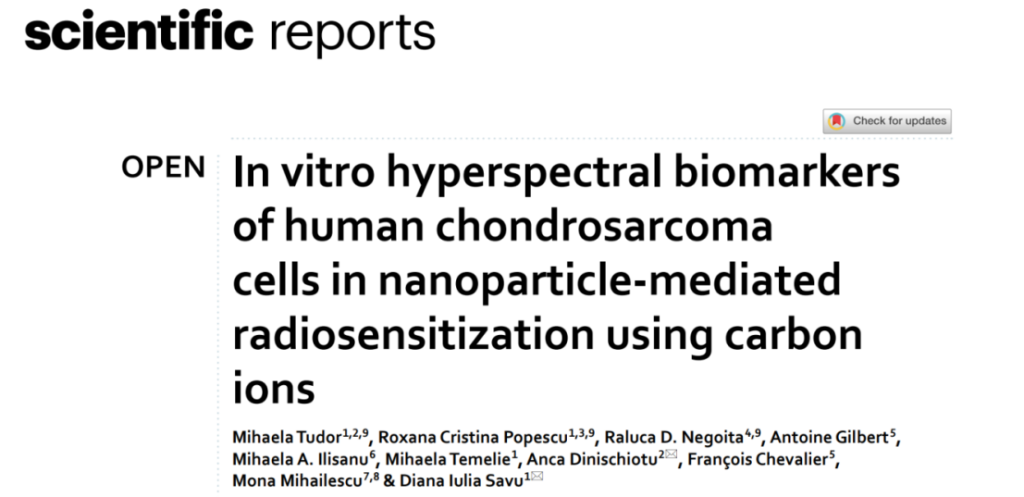Cancer and chronic wounds represent major global health challenges, with significant impacts on patient morbidity, mortality, and quality of life. The search for effective treatment strategies has led to extensive research efforts in recent years. The three studies under review herein offer novel insights and potential therapeutic avenues in the management of chondrosarcoma, diabetic wounds, and HCC.
Study 1: Nanoparticle-Mediated Radiosensitization of Chondrosarcoma Cells

Mihaela Tudor and colleagues investigated the use of polyethylene glycol-encapsulated iron oxide nanoparticles loaded with doxorubicin (IONPDOX) to enhance the cytotoxic effects of carbon ion and photon irradiation in chondrosarcoma cells. The combination of IONPDOX with irradiation increased the lethal effects, as evidenced by a decrease in cell survival and an increase in micronuclei induction. The dose modifying factors (DMFs) indicated a significant reduction in survival fraction with the addition of IONPDOX, particularly in combination with carbon ion irradiation. Spectral analysis of cell nuclei using enhanced dark-field microscopy with a hyperspectral imaging module revealed alterations in the spectral profiles following treatment, which correlated with the observed biological effects. These findings suggest that the proposed combined treatment holds promise for improving chondrosarcoma radiotherapy.
Study 2: Biofilm Microenvironment-Triggered Therapy for Diabetic Wounds

Li Yang’s team developed a microneedle (MN) bandage functionalized with dopamine-coated hybrid nanoparticles containing selenium and chlorin e6 (SeC@PA) for the treatment of diabetic wounds. SeC@PA demonstrated the ability to bidirectionally regulate reactive species (RS) generation in response to the wound microenvironment. In biofilms with high glutathione (GSH) levels, it generated a reactive species storm to eradicate biofilms, while in wound beds with low GSH levels, it acted as an RS scavenger, reducing inflammation. The SeC@PA MN bandage effectively delivered the nanoparticles, promoting wound healing by enhancing macrophage polarization, increasing angiogenesis, and collagen deposition. This self-enhancing, catabolic, and dynamic therapy offers a novel approach to treating chronic diabetic wounds.
Study 3: Targeting Macrophage Ferroptosis and Polarization in HCC

Bufu Tang and associates focused on the role of xCT-mediated ferroptosis and protumoral polarization of macrophages in HCC. They found that xCT-specific knockout in macrophages limited tumorigenicity and metastasis in mouse HCC models by reducing TAM recruitment and infiltration, inhibiting M2-type polarization, and enhancing ferroptosis activity within TAMs. The SOCS3-STAT6-PPAR-r signaling pathway was identified as a crucial regulator of macrophage phenotypic shifting. Additionally, xCT-mediated macrophage ferroptosis increased PD-L1 expression in macrophages, enhancing the efficacy of anti-PD-L1 therapy. The constructed Man@pSiNPs-erastin nanoparticles specifically targeted macrophage ferroptosis and protumoral polarization, and combined treatment with anti-PD-L1 exhibited substantial antitumor efficacy. xCT expression in tumor tissues, especially in CD68+ macrophages, was shown to be a reliable prognostic factor for HCC patients.
Conclusion
The research presented in these three studies represents significant advancements in the understanding and treatment of chondrosarcoma, diabetic wounds, and HCC. The findings offer new perspectives on the role of nanoparticles, macrophage modulation, and microenvironment-targeted therapies. By integrating these insights, future research may lead to the development of more effective and personalized treatment strategies for cancer and chronic wound patients. Continued exploration of these and related areas holds great promise for improving patient outcomes and quality of life.
Reference:
Tang, Bufu, et al. “Targeted xCT‐mediated ferroptosis and protumoral polarization of macrophages is effective against HCC and enhances the efficacy of the anti‐PD‐1/L1 response.” Advanced Science 10.2 (2023): 2203973.
Tudor, Mihaela, et al. “In vitro hyperspectral biomarkers of human chondrosarcoma cells in nanoparticle-mediated radiosensitization using carbon ions.” Scientific Reports 13.1 (2023): 14878.
Yang, Li, et al. “Biofilm microenvironment triggered self-enhancing photodynamic immunomodulatory microneedle for diabetic wound therapy.” Nature Communications 14.1 (2023): 7658.
